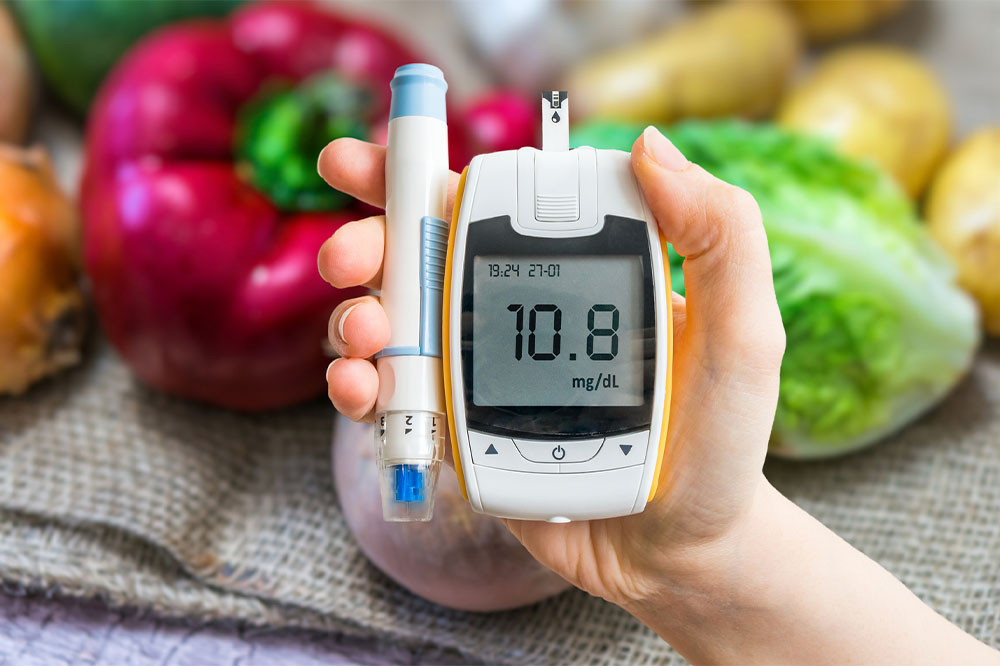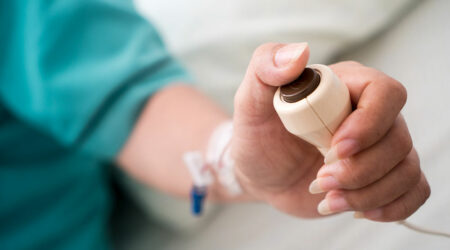
Diabetes – Signs, types, causes, and management
More than 400 million people worldwide have diabetes, a condition characterized by unstable blood glucose levels. Despite being so widespread, diabetes is rarely diagnosed in the initial stages. Many people live with the disease for years before finding out, making it challenging to manage. Keeping this in mind, we have listed the signs of diabetes, its types, causes, and ways to manage the condition with nutrition, lifestyle changes, and treatment.
Signs of diabetes
Diabetics usually observe a decrease in their body’s healing capacity due to high blood sugar. As a result, wounds and cuts take longer to heal. High sugar also makes it hard for the eye’s lens to relax and contract, leading to unclear and blurry vision. Some people feel hungry more often because of insulin resistance, which occurs when the body cannot break down sugar and convert it into energy.
Types of diabetes
Type I diabetes occurs when the body fails to produce insulin to balance blood sugar levels. Doctors say that this is because the immune system destroys the pancreatic beta cells. In type 2 diabetes, the body produces insulin in small quantities. However, the cells cannot process insulin properly, leading to what is known as insulin resistance. Gestational diabetes is a lesser-known form of diabetes (usually temporary) that may develop during pregnancy.
Causes of diabetes
The cause of diabetes varies in each type. The exact cause of type 1 diabetes is unknown as we do not know why the immune system destroys pancreatic beta cells. However, it is generally attributed to genetic predisposition. In type 2 diabetes, the pancreas cannot produce sufficient insulin because of genetics or lifestyle factors. Gestational diabetes results from hormonal changes during pregnancy. Insulin, a type of hormone, gets imbalanced, resulting in high blood sugar.
Foods to eat
The following foods help manage blood sugar levels:
Fatty fish
Fatty fish like salmon is rich in omega-3 fatty acids called DHA and EPA. These help prevent inflammation associated with diabetes and have several other health benefits.
Avocados
The fat molecules in avocados inhibit incomplete oxidation in the pancreas. This can reduce insulin resistance and lower blood sugar. Further, avocados have fewer carbs and more fiber.
Berries
Berries like blackberries, strawberries, and raspberries are full of antioxidants that reduce oxidative stress. This, in turn, helps balance insulin and blood sugar levels.
Foods to avoid
Diabetics must steer clear of these foods:
Artificial beverages
Artificial beverages are full of sugar and artificial flavors that interfere with insulin production. Moreover, the body absorbs liquids more efficiently than solids, causing blood sugar spikes.
Deep-fried foods
Deep-fried foods such as fried chicken and French fries can create insulin and blood sugar imbalance as they are full of “bad” or LDL cholesterol. This can give rise to type 2 diabetes.
Cakes and pastries
These are made from white flour, and the icing is full of refined sugar and artificial flavors, which can increase blood sugar levels. They also have harmful preservatives.
Home remedies for diabetes
Here are a few tips for maintaining blood sugar levels naturally:
Control carb intake
Carbohydrates are first broken down into sugars. Insulin then moves these sugars into the cells, causing blood sugar to rise. Therefore, patients must lower their carb intake.
Portion control
Exercising portion control can help regulate calorie intake and maintain body weight. This, in turn, helps lower blood sugar levels and keeps other health conditions at bay.
Control stress
Stress affects blood sugar levels. When stressed, the adrenal gland releases sugar-inducing hormones into the bloodstream. Regular exercise, meditation, and yoga can help destress.
Treatment for diabetes
Treatment varies depending on the type of diabetes. Since the body does not produce insulin in type 1 diabetes, patients rely on external insulin. There are different types of insulin, depending on the severity. Type 2 diabetes is mainly managed with oral treatments that slow down the body’s breakdown of starchy and sugary foods and enhance the effectiveness of insulin.




